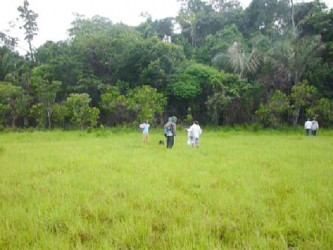Film-maker Michael Gilkes promises to give viewers an insight into the lives of the Makushi people living in Surama Village in the Rupununi in an “exciting and interesting way” when he rolls out his new film titled ‘Maira and the Jaguar people.’
It is a story about children and the film is the first in a series of 14 films to be shot in different countries under the theme ‘Growing up Caribbean.’
“It is the first because we have the first peoples here and it is the only one that will focus on the interior, the rainforest,” Gilkes told the Sunday Stabroek in a recent interview.
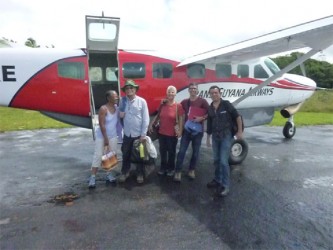
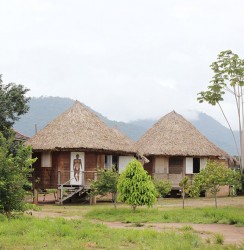
Most of the actors are expected to be Amerindian and children will be central to the film. He said the main characters in the film will be Maira and her brother Mairun and he has already found the children to play that role and rehearsal has commenced.
The films in the series are expected to show how children grow in the Caribbean and are set to be entertaining and interesting with original stories written by Caribbean writers.
Gilkes, who has undertaken several film projects, the last being Concert in the Rainforest with the Wai Wai people, said they want to start shooting the film in November and the preliminary work has already begun.
At present the project awaits government funding which has been promised, but in the meantime the private sector has also pitched in and this has facilitated two preliminary trips to the Rupununi.
Gilkes is the writer and director of the film and he said it is based on what he has learnt of the interior and its people.
“So it is based on their lives and their traditions,” he said, adding that the film will be the flagship production for the series.
He envisions that the film will attract people to Guyana as it would present the country in a different light that many may never have seen.
“You are seeing it [Guyana] from the perspective of the Amerindian people, from their eyes…” Gilkes said.
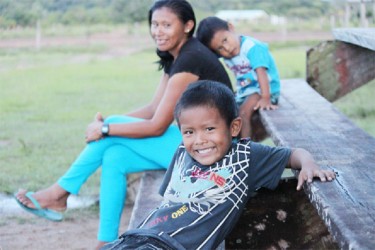
He explained that the Surama people would build a film village for them so as to minimize the disturbance to the villagers during filming. It is expected that the village would then become part of the community’s eco-tourism facilities and would accommodate persons who visit the area.
“So it is a useful thing we are doing both for the Amerindians and for ourselves; what we would be doing is showing Guyana from another perspective and we would attract people.”
Gilkes noted that when visitors go into the rainforest it is to see the flora and fauna and it is never really about the people, so the whole community of the Makushi people would be featured in an “exciting way.” During the film Maira and her brother go into the forest and meet a talking jaguar and they learn from the experience that they have to respect everything, even death. The music of the forest, such as the bird songs and sound of the flute, are to play a big part. They and the viewers are taken back in time as the films unfolds, and they are caught up in a dreamlike drama of life and death with the talking jaguar when they lose their way in the forest to look for the elusive ‘flute-bird.’
Since they discovered the jaguar’s secret he refuses to allow them to return to the village and they are sad they must become ‘jaguar people’ like him. However, later the jaguar attacks them, and in the end the brother kills the animal and saves their lives.
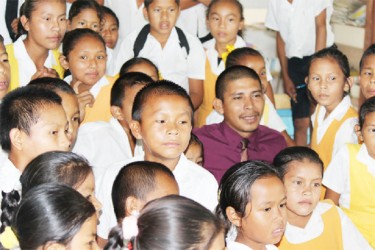
And a lesson would be taught which according to Gilkes would be that the Makushi people are at ease in their community with little conflict, crime and no garbage.
“They protect their environment and I think we can learn from that. We need to protect our environment, we need to protect it. We can’t be throwing cups out of the windows in the traffic because soon we would be burying ourselves.”
He noted that unless Guyanese take care of their communities and their environment it would swallow them, pointing out that the Amerindians take care of the rain forest because it is their life.
Turning to the film series Gilkes said that the film-makers are attempting to reveal the lives of the Caribbean people and how closely they are intertwined. According to Gilkes many times when you ask Caribbean people where they are from they would name their individual countries instead of saying the Caribbean, but for him it is the Caribbean, because he can live in any part of the region.
Even though he has lived in various parts of the world Gilkes said he is never far from Guyana as his “navel string is buried here.”
“Even if I am not in Guyana this is where I am, here, and so for me it is an important film to make. It is my home and your home and I want to show how wonderful it is,” he said.

He said his wife lives with their daughter in England and while he “lives there when I can” he is always on the move and does not remain in one place for long. From Guyana he heads to Barbados, then to England and will return to Guyana to continue work on the film.
A professor, Gilkes said he no longer teaches in classrooms but he does teaching through films and on stage. He was the Head of the English Department at the UWI Cave Hill campus and a founder member and first artistic director of the Barbados-based theatre company ‘Stage One.’ Gilkes has been involved in theatre arts for over 40 years as an actor, director, playwright, dramaturge and film-maker.
